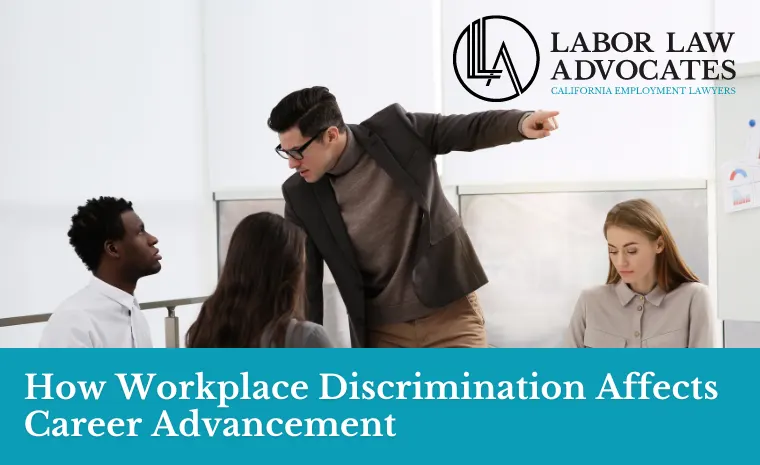How Workplace Discrimination Affects Career Advancement
A 2017 Harvard T.H. Chan School of Public Health study on workplace discrimination in America showed that 57% of African Americans indicated experiencing bias concerning salary and opportunities for career advancement. Moreover, 31% of women participants have faced gender-based discrimination during the job application process.
The series of surveys also showed that Native Americans residing in areas where the majority of the population is Native are more prone to encountering prejudice in hiring, promotion, and pay. The poll results indicated discriminatory practices in relation to harassment, healthcare, and police interaction.
Read on to learn what is workplace discrimination, its impact on career advancement, and the strategies to combat and prevent it.
Experienced discrimination at work?
What is Workplace Discrimination?
Discrimination in the workplace occurs when an individual or a group of individuals is treated unfairly or differently due to certain protected characteristics, including race, ethnicity, age, gender identity, disability, sexual orientation, religious beliefs, marital status, or national origin.
Mistreatment can occur in various ways, such as among colleagues, between workers and their employers, or even with job applicants. It is crucial to emphasize that whether it is intentional or unintentional, discrimination is prohibited by the United States law.
Unlawful Discrimination Hinders Career Advancement
Career advancement refers to moving up to a higher level in your profession. This progression often involves gaining an advanced job title, taking on more responsibilities, developing new skills, and earning a higher salary. Pursuing career advancement can lead to greater job satisfaction, new opportunities, and a path for continuous learning, making it an attractive prospect for those who seek growth.
But, what happens when there are different forms of discrimination happening in your workplace?
Workplace discrimination can have a significant impact on an individual’s ability to progress in their career. It can limit opportunities for career advancement by impeding access to promotions, pay raises, and other benefits.
Experiences of discrimination can also negatively affect an individual’s job satisfaction, motivation, and overall well-being, leading to reduced performance and lower chances of advancement.

Workplace Discrimination Types
Workplace discrimination can take different forms. Most of these are safeguarded by federal laws, which include:
Disability Discrimination
The Americans With Disabilities Act (ADA) of 1990 prohibits discriminatory action against workers or qualified job applicants based on their disabilities or medical condition. Employers cannot decline to hire candidates with disabilities or treat disabled employees adversely solely due to their disability status.
Racial Discrimination
Race-based discrimination is the unlawful treatment of a job applicant or an employee based on their race or any personal characteristics associated with race. The same applies to color discrimination, which is the mistreatment of someone based on their skin color or complexion. According to the FEHA (Fair Employment and Housing Act) in California, it is unlawful to discriminate against any person because of their color, race, or ethnicity.
Religious Discrimination
Employers cannot treat their employees unfairly or negatively based on their religious beliefs and practices. Companies in the United States need to provide reasonable accommodation for workers to observe their religious practices.
Gender and Sex Discrimination
According to the Equal Pay Act of 1963, employers must provide every employee with equal pay for performing substantially similar work. The act also emphasizes that job content, not job title, should determine whether roles are equivalent. Additionally, Title VII of the Civil Rights Act prohibits sex-based discrimination in employment, meaning it is unlawful for employers to pay employees of different genders or sexes different salaries for doing the same work.
Sexual Orientation Discrimination
In 2020, the U.S. Supreme Court ruled that it is a Title VII of the Civil Rights Act violation to terminate a worker based on sexual orientation. It is also against the law to discriminate against employees based on their sexual orientation or gender identity when it comes to fair compensation, employment opportunities, or workplace benefits.
Impact of Discrimination in Career Advancement
A 2019 study conducted by the National Institute for Health (NIH) suggests that perceived discrimination in the workplace negatively impacts both the mental and physical health of employees. The study involved a meta-analysis of previous research and literature that explores the potential pathways that link discrimination to negative health outcomes.
The analysis revealed that individuals who experience unfair treatment are more likely to suffer from psychological distress and health-related issues.
Experiences of discrimination was also linked to untoward behavior & mental health concerns, such as:
- Smoking
- Heavy alcohol use
- Ineffective coping mechanisms, anxiety, and depression
- Loss of self-control and hostility
- Suicide attempts
Physical health problems are also related with the prevalence of workplace discrimination. Some of the most reported symptoms are:
- Body aches and pains
- Cardiovascular illness, including high blood pressure
- Breast cancer
- Obesity
Strategies To Combat Workplace Discrimination
Promoting a better workplace can be a challenging and disruptive task, especially if your organization has entrenched discriminatory practices and attitudes. However, it is a worthwhile endeavor.
Apart from the legal and financial implications of a discrimination lawsuit, it also enables a toxic work environment that is detrimental to everyone. You cannot fully realize the advantages of workplace diversity if your environment repels individuals who have different perspectives, behaviors, and appearances.
Here are five measures to establish a wholesome and hospitable workplace:
Diverse Hiring Practices
To create a more welcoming and less discriminatory workplace, it is necessary to address any lack of diversity within your organization. It is crucial to emphasize inclusive hiring practices in job descriptions, irrespective of applicants’ backgrounds or disabilities.
In addition, it is essential to ensure that the panel of interviewers reflects a diverse range of backgrounds and to enlist assistance in sourcing candidates from varied backgrounds.
Sensitivity Training for Employees and Management
Educate your team on anti-discrimination laws, how mistreatment affects the workplace, and emphasize that it has a negative impact on individuals at all levels of the organization, regardless of demographics. A respectful, valued, and inclusive work environment leads to happier, healthier, and more productive employees who are likely to stay longer.
Although discrimination, stereotyping, and bias are persistent issues, they can be overcome. Given the high prevalence of workplace discrimination and its impact on people, it is worthwhile to invest in sensitivity training to create an environment where everyone feels valued and appreciated.
Strong Policies Against Discrimination
It is essential for leaders to communicate their commitment to inclusive values in the policies, procedures, practices, and incentives that address systemic inequality. Moreover, they must hold all employees accountable for adhering to these values. The reporting infrastructure, such as a hotline, discussions with DEI officers or managers, or any other means, should support and reinforce an individual’s value and the company’s values.
Diversity and Inclusion Initiatives
By fostering an inclusive and diverse work environment, companies can unlock the full potential of their workforce and benefit from the unique perspectives and ideas that employees from different backgrounds bring. Such initiatives not only improve employee satisfaction and retention but can also boost business performance and reputation. Ultimately, creating a work environment that is welcoming and inclusive to all benefits everyone.
Encouraging Reporting and Addressing Complaints
You have the option to file an employment discrimination complaint either with your state’s department of labor or with the US EEOC (U.S. Equal Employment Opportunity Commission). To ensure that your complaint is directed to the appropriate agency, here is a step-by-step guide on how to go about the complaint process.
1. Gather vital information.
To file a complaint, you must provide the name, address, and phone number of the individual facing maltreatment and the business or employer being accused. Additionally, having contact details of any witnesses to the mistreatment, harassment,or unfair conduct could be beneficial.
2. Document your exposure to mistreatment.
For your complaint to be valid, it should have a concise description of the incident. Provide names and specifics such as date, time, and location. To prove harassment, it’s crucial to demonstrate that the conduct or contact was continuous and unwanted. Therefore, it’s recommended to record all relevant events to establish a pattern of hostility in workplace.
3. Submit your complaint.
Once you have completed your account of the incident, you should submit it to the relevant organization without delay. There’s no requirement for a specific form or referral to lodge a complaint. However, please note that there may be a time limit for filing a complaint, so it’s essential to act promptly.
Supporting Career Advancement: A Motion Against Blatant Discrimination in the Workplace
While an organization may have valid concerns about potential liabilities when investigating discrimination, the cost of ignoring it is much greater. Employees who experience discrimination are often disengaged, suffer from poor well-being, and are more likely to leave their jobs, resulting in reduced profitability for the employer.
Acknowledging the existence of discrimination, especially its disproportionate impact on Native American, Hispanic, Asian, and Black workers, is the initial step in establishing a workplace that promotes equity and inclusivity.
A vital step is to create a culture that supports career advancement for all employees, regardless of their background, by providing equal opportunities for training, mentorship, and professional development. This culture shift requires leadership that values and prioritizes diversity, inclusion, and equity as core values of the organization.
How Can An Employment Lawyer Help You?
Did you experience mistreatment or sexual harassment at your workplace because of your sexual orientation, disability, religious belief, or racial differences? Or do you need help filing an employment discrimination complaint?
Consult with the most qualified employment attorney in California for legal advice.
Labor Law Advocates has California’s award-winning employment lawyers who specialize in labor law and personal injury cases. Speak with one of our experts for a free consultation.
We are available 24/7, so call us anytime at (424)-688-3632.




